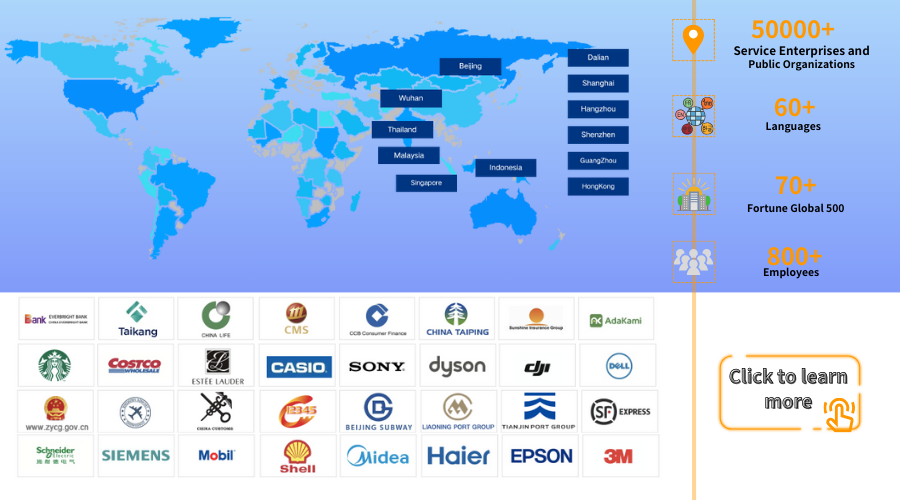Finding Out Why You’re Losing Customers
Article Summary:In today's fiercely competitive market environment, customer churn is a challenge no business can avoid. Each lost customer represents not just a direct loss of profit, but also potentially a decrease in market share and brand loyalty. Therefore, identifying and addressing the root of customer churn is crucial for sustained business growth. This article delves into common reasons for losing customer and offers practical strategies to regain customer trust and favor.
Table of contents for this article
In today's fiercely competitive market environment, customer churn is a challenge no business can avoid. Each lost customer represents not just a direct loss of profit, but also potentially a decrease in market share and brand loyalty. Therefore, identifying and addressing the root of customer churn is crucial for sustained business growth. This article delves into common reasons for losing customer and offers practical strategies to regain customer trust and favor.
Identifying Signs of Customer Churn
Customer churn doesn’t happen overnight; it often comes with a series of warning signs. These signals include but are not limited to:
- Decreased customer interaction: Customers no longer frequent your website, engage on social media, or respond to your emails as often.
- Reduced purchase frequency: There's a noticeable lengthening of loyal customers' buying cycles or a significant decrease in the amount they spend.
- Increased negative feedback: More dissatisfaction is voiced in online reviews or customer surveys.
- High customer service requests: Frequent complaints or requests for returns indicate potential product or service flaws.
Recognizing these indicators early allows businesses to proactively address issues and retain valuable customers.
Exploring the Root Causes of Customer Churn

Customer churn stems from various complex reasons, but can generally be categorized into the following:
Issues with Product or Service Quality
Poor product performance, declining quality, or lack of innovation directly contribute to customer churn. When products fail to meet expectations, customers lose confidence and seek alternatives that better align with their needs. Similarly, declining quality indicates reduced reliability and durability, impacting customer satisfaction and loyalty. Furthermore, a lack of innovation leaves products lagging behind market changes and competitors, leading to loss of market share and competitive edge.
Therefore, businesses must continually assess their products or services, actively gather customer feedback, and make improvements to ensure products remain current, meet market demands, and deliver satisfactory experiences. Only then can businesses establish a resilient position in fierce market competition and sustain long-term growth and success.
Terrible Customer Service
Terrible customer service is a key factor contributing to customer churn. Slow responses, inefficient issue resolution, or indifferent attitudes can quickly erode customer patience and loyalty. Excellent customer service is not just about addressing customer issues and needs, but also a crucial aspect of maintaining customer relationships. Good customer service can establish trust and loyalty, encouraging customers to maintain long-term positive relationships with the company.
Pricing Considerations
Price-sensitive customers may be swayed by competitors' promotional offers. Maintaining price competitiveness while emphasizing value over mere cost is a strategy that businesses need to consider. Additionally, pricing should remain consistent across different customer segments and time periods to avoid confusing consumers. A reasonable approach to presenting prices involves tiered pricing, clearly outlining the pricing for different packages and providing multiple options for consumers to choose from.
Poor Customer Experience
Every step of the customer journey, from the purchasing process to post-sales service, significantly influences customer satisfaction and loyalty. Customer experience spans the entire journey, encompassing activities like product browsing, purchase decisions, order placement and payment, logistics and delivery, as well as after-sales support. Complex shopping processes, unfriendly interface designs, and lack of transparency can all drive customer attrition.
Transparency of information and communication efficiency directly impact customer experience. If customers cannot obtain sufficient support during the purchasing process—such as unclear product specifications, pricing, or promotional details—their purchase intent may diminish. Moreover, timely and effective customer communication is crucial. Swift assistance and clear responses to customer inquiries during the purchasing journey greatly enhance satisfaction. Conversely, delayed responses or ambiguous answers can lead to dissatisfaction and customer churn.
The quality of post-sales service directly influences repeat purchases and long-term loyalty. A robust post-sales service system, including return policies, repair services, and customer complaint handling, ensures that customers continue to feel cared for and valued after their initial purchase. Companies should establish efficient mechanisms for post-sales support to promptly address customer issues. Through proactive customer care initiatives, businesses can elevate customer satisfaction and encourage repeat purchases.
Developing Strategies to Win Back Lost Customers

Once you understand the reasons behind customer churn, the next crucial step is taking action to regain those who may have drifted away.
Responding Promptly to Customers
Slow response times are a major factor contributing to inadequate customer service. Nowadays, more and more businesses are adopting intelligent customer service systems that utilize AI technology to enhance service quality. As a leading provider of intelligent customer service systems, Udesk has partnered with numerous enterprises. Their offerings, including omnichannel solutions and intelligent chatbots, are widely trusted in the industry.
Integrating various customer communication channels, such as phone, email, social media, and instant messaging, into a unified customer service platform ensures centralized handling and efficient flow of information. This way, regardless of which channel customers use to reach out, the customer service team can promptly receive and respond to messages, avoiding any information gaps or delays.
Udesk's Live Chat allows customers to engage in real-time communication with businesses through their preferred channels. Messages can be instantly pushed, ensuring smooth communication between customer service representatives and customers. When customers send messages, they will immediately appear in the customer service system, enabling prompt replies from the support team and avoiding customer dissatisfaction due to delays. Udesk integrates intelligent chatbots that can automatically respond to common inquiries, reducing the burden on human agents. The chatbot can quickly and accurately answer customer questions based on predefined rules and knowledge base, enhancing response speed.
Conclusion
Customer churn is an inevitable challenge in business development, yet it presents both challenges and opportunities. Faced with customer churn, businesses need to carefully analyze the reasons behind it and develop targeted marketing strategies to reclaim lost customers.
Introducing the Udesk intelligent customer service system can help businesses reduce customer churn. Through features like Live Chat, AI chatbots, and knowledge base services, your enterprise can enhance customer experience, win favor with customers, and achieve sustained growth.
》》Click to start your free trial of live chat, and experience the advantages firsthand.
The article is original by Udesk, and when reprinted, the source must be indicated:https://www.udeskglobal.com/blog/finding-out-why-youre-losing-customers.html
customer service systemLive ChatReasons for customer churn

 Customer Service& Support Blog
Customer Service& Support Blog



